Chadwick Moore — Left for Dead in Danville: How Globalism Is Killing Working Class America
The city of Danville, Virginia sits in the bellybutton of the Blue Ridge Mountains, a hat-toss over the North Carolina border and about 85 miles northwest of Raleigh. It’s low hill country and Danville straddles the frothy, chocolate-milk waters of the Dan River. Downtown, once a booming trade district, today is a decomposed industrial husk, a tidy cluster of silent rectangles ensnared by broad, ghostly thoroughfares built for a time in the not-so-distant past when people and goods poured in and out of town.
Those days are gone, perhaps never to return.
The story of Danville is one echoed in countless communities across the country, a gutted middle class left for dead in the wake of sweeping international trade deals in Washington, applauded by liberal economists and a lockstep media portraying such policies as inevitable, ultimately good, and a win for the American consumer–a narrative usually coupled with condescending and disdainful attitudes toward displaced workers for a perceived inability to sprint ahead with the times.
As recently as the early 2000s, Danville’s top employer, textile manufacturer Dan River Mills, which specialized in bedding, sold 33 percent of production to Wal-Mart stores–the highest number federal law allows a retailer to buy from a single manufacturer–and held other lucrative contracts with K-Mart, producing Martha Stewart’s textile line.
It was an iconic American company. Within 20 years of incorporation, in 1882, Dan River Mills was the largest textile manufacturer in the South, and by 1909 produced annually 78 million yards of cloth.
“My parents raised four children working at the Dan River mill,” says Sonya Lewis, whose grandparents also worked for Dan River, on a recent Saturday evening while attending a memorial service for a friend at a Mexican restaurant in Danville.
“Growing up here, it was booming. It was a great place. I remember that everybody worked, everybody I went to school with, their parents worked,” she says.

Empty streets in downtown Danville on a Saturday afternoon. Before textile manufacturing defined the city’s economy, it was a hub of the tobacco trade. (Chadwick Moore/Breitbart News)
When Bill Clinton assumed the presidency in 1993, business was so good that, even with technological innovations in manufacturing, Dan River Mills still had a labor shortage. The company acquired seven other manufacturing facilities in the area, employing 6,500 workers, according to Owen Voss, a former employee in Dan River’s corporate offices.
But Voss saw the writing on the wall when Clinton signed the North American Free Trade Agreement in 1994, a deal drafted by his predecessor, President George H.W. Bush. The following year the General Agreement on Tariffs and Trade, a 50-year-old trade agreement aimed at reducing tariffs, was replaced by the World Trade Organization (WTO), which then included 125 nations and governed 90 percent of global trade.
“Bill Clinton killed manufacturing in the United States,” Voss, a gentle, soft-spoken middle-aged man and motorcycle enthusiast, says.“Dan River is a perfect example. It built this town, and NAFTA killed it.”
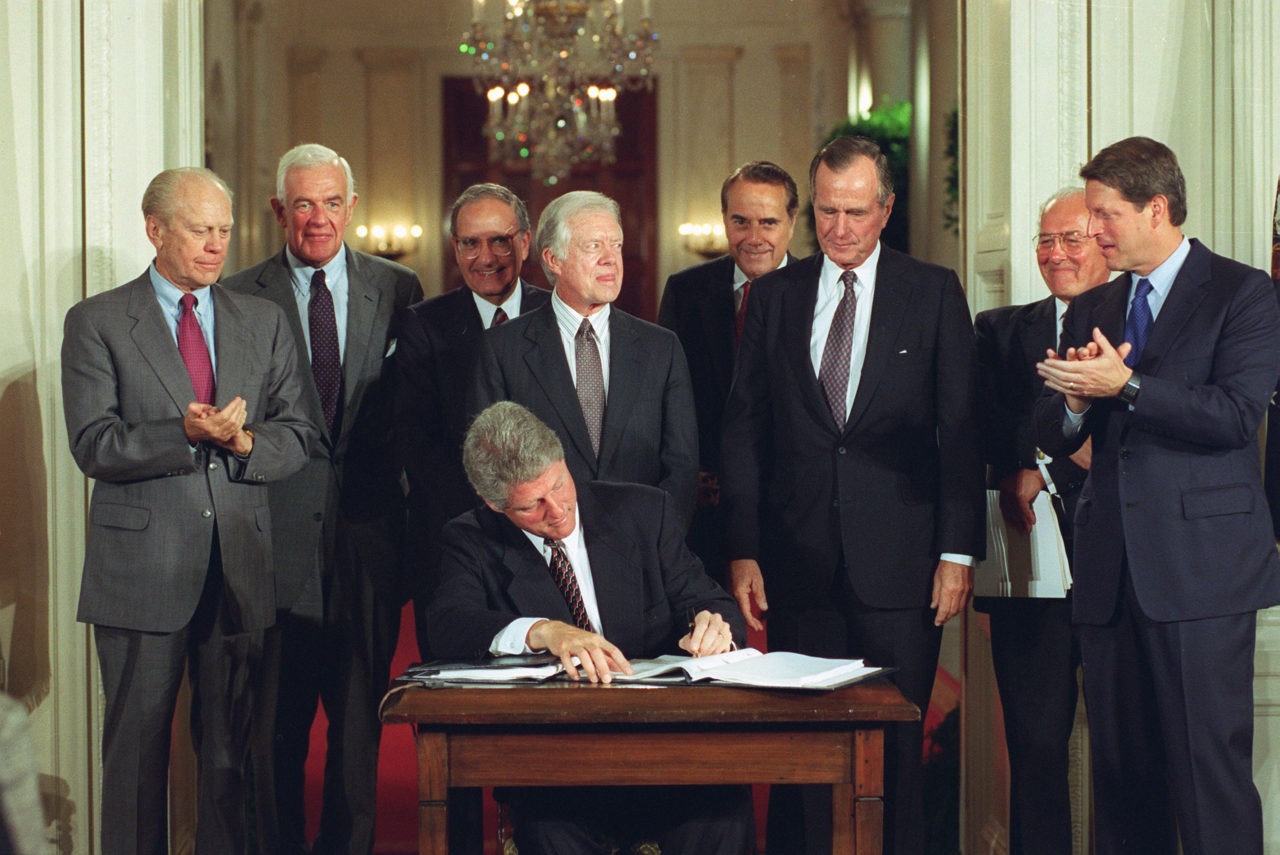
President Bill Clinton signs the North American Free Trade Agreement (NAFTA) at the White House on September 14, 1993. Behind him (left to right) is President Gerald Ford, House Speaker Thomas Foley of Washington, Senate Majority Leader George Mitchell of Maine, former President Jimmy Carter, Senate Minority Leader Bob Dole of Kansas, former President George Bush, House Minority Leader Bob Michel of Illinois, and Vice President Al Gore. (AP Photo/Ron Edmonds)
Since 2000, the year that China joined the WTO and six years after the NAFTA agreement was signed, the U.S. has lost an estimated 5 million manufacturing sector jobs, with 900,000 of those from the textile industry. Only one in five job losses in domestic textiles has been attributed to technological advancements in automation. Between 1997 and 2009, 650 textile plants, mostly in the South, have closed in the U.S.
Voss recalls the then-CEO of Dan River, Joseph Lanier Jr., passed around a petition to block NAFTA that was later sent to Clinton’s White House.
“My life, like everyone else’s, took a big dip,” says Voss. “The murder rate has tripled, gang activity is everywhere, suicides are up. My cousin committed suicide in 2010. He was laid off from Dan River and unable to find work and got into drugs. My nephew was murdered that same year, it had to do with drugs. He was 28. You couldn’t imagine any of this happening in the 90s. The middle class has moved to the lower class. What used to be a middle class neighborhood is now ‘the hood,’” he says.
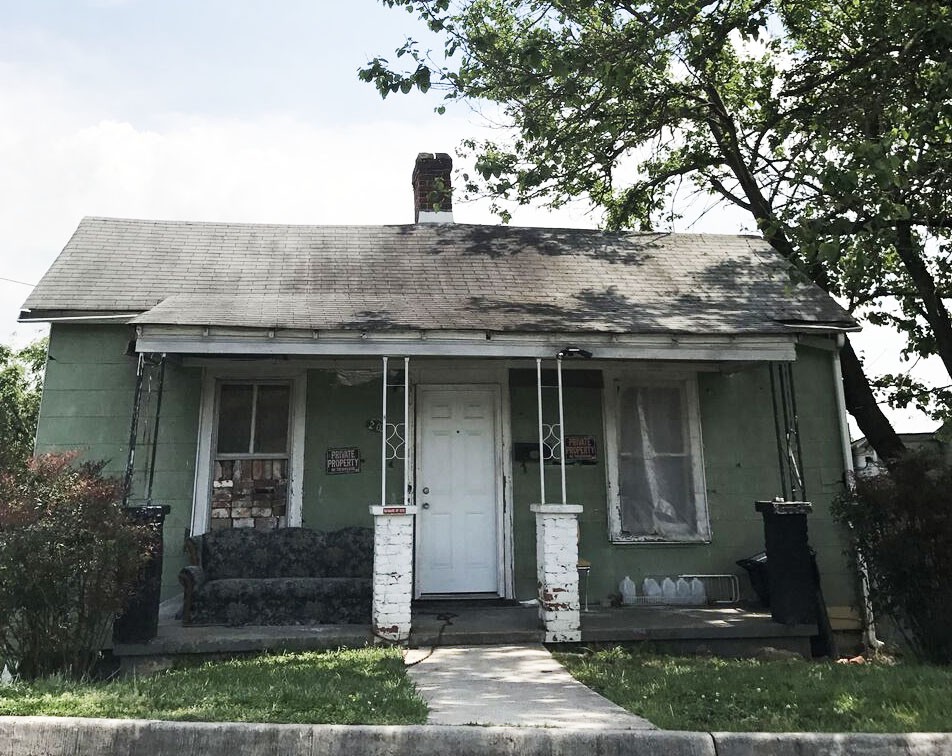
A home on Danville’s north side, once a thriving suburban community where mill workers lived. Now, there are entire blocks of abandoned or unsound structures. (Chadwick Moore/Breitbart News)
In 2015, Danville’s median household income stood at $32,935, well below Virginia’s statewide average of $66,262. In 1990, the average income of Danville was $44,357 per household, when adjusted for inflation.
According to statistics from the Federal Reserve, as the population decreased by almost 20 percent between 1990 and 2014, the number of food stamp recipients in Danville nearly tripled from less than 5,000 in 1989 to nearly 13,000 today. That is more than a quarter of the population.
With the economic collapse, racial tensions are on the rise, an ugly development in a town that is 47 percent white and 48 percent black, where many recall the prosperous years of a harmonious, multi-racial middle class entwined in the same industry. Last year, the Ku Klux Klan announced a rally in Danville. It never materialized save for counter-protesters who showed up in response. This year, flyers for the KKK were seen circulating around town.
Danville sits in Virginia’s 5th Congressional district, a chunk of the state larger in area than New Jersey. Future president James Madison was the district’s first representative in Congress. The city, which by the 1800s was a prosperous tobacco trading center, would go down in history as the last capital of the Confederacy when Jefferson Davis fled here after the fall of Richmond and set up a temporary White House where, soon after, he surrendered to the Union.
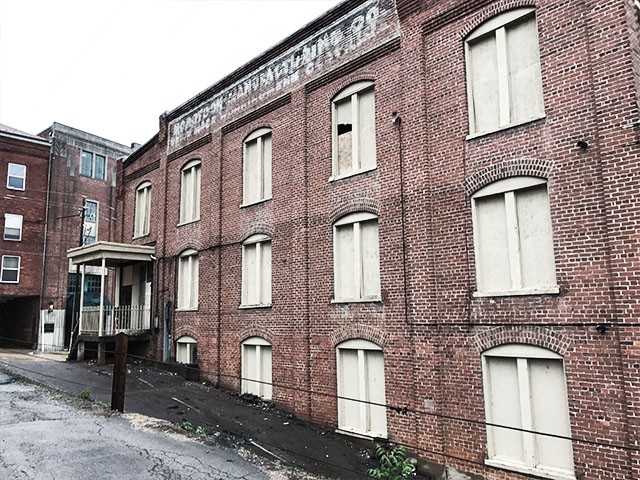
A strip of boarded-up industrial spaces in downtown Danville, Virginia. (Chadwick Moore/Breitbart News)
In 1994, NAFTA passed with overwhelming support in Congress (mostly from Republicans) with both Virginia Senators and the 5th district’s Democratic Congressman, Lewis Payne, voting for the trade agreement. (Payne was re-elected the following year, but died in 1997). Virginia’s 5th has sent a Democrat representative to Congress each year since the 1880s, but flipped Republican in 2012, where it has remained since.
In 2006, after hemorrhaging jobs for years under the pressure from retailers to compete with cheap foreign products, the White Mill–Dan River’s main production facility–closed its doors for good. The company was acquired by Gujarat Heavy Chemicals, of India, and the remaining 500 workers were terminated. The 650,000 square foot gothic-revival structure had been in continual operation since opening in 1921, towering for generations over the landscape like a citadel.
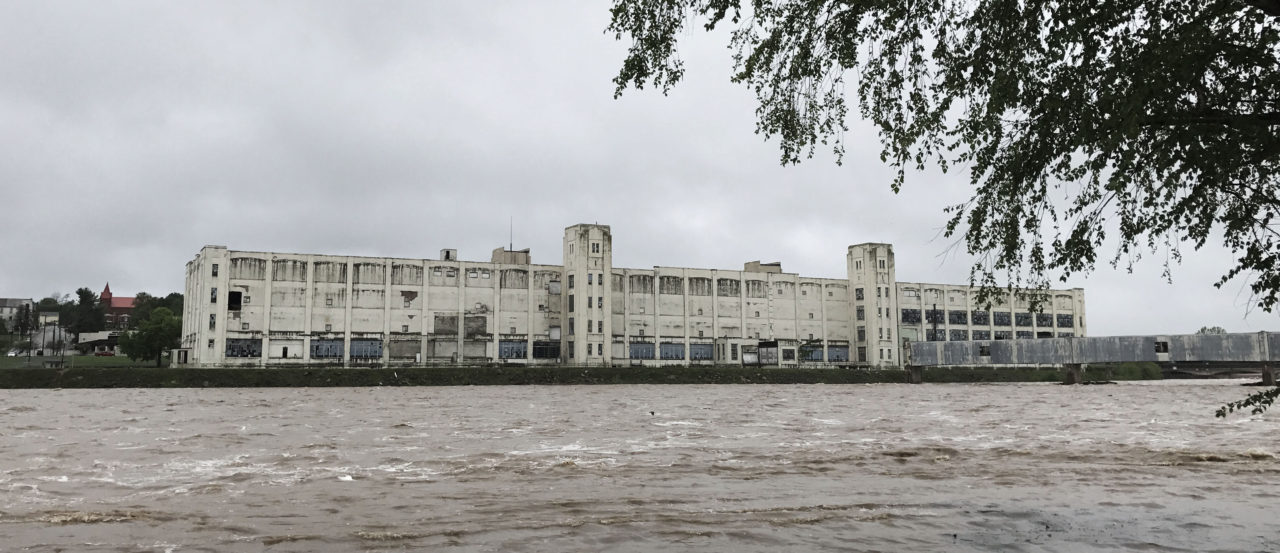
The White Mill facility, the base of Dan River Mills’ operations, closed its doors in 2006 after hemorrhaging jobs for decades. (Chadwick Moore/Breitbart News)
Michael Stumo, the CEO of the Coalition for a Prosperous America, a nonprofit trade policy think tank, describes the myth that so-called free trade agreements are universally beneficial as having completely fallen apart in recent years.
“There’s a lot more losers than we thought. It’s starting to look like it might be a majority of losers if you’re not in New York City, San Francisco, and the like,” Stumo says. “Everything in between is being economically carpet-bombed.”
He calls NAFTA the model for several free trade agreements that have followed, particularly with China, which, despite the Washington and New York narrative of such deals being a sublime realization of true free market capitalism, are in reality anything but.
“When you have China, for example, subsidizing energy, free land, subsidized employment, low cost or free credit loans that become grants and can undercut you by half, that’s really big. It’s an unearned advantage because of subsidies.”
Sumo cites the formation of the WTO in 1995, which formalized previous trade parameters and deepened the globalist model of dissolving borders and displacing national sovereignty, as a follow-up to NAFTA.
“When China joined the WTO in 2000 with 1.3 billion people underemployed, it began pulling them out of the rice paddies, the farms, and rural areas, and putting them to work. The Chinese under-consume. They produce more than they consume, [in] a country that’s four and a half times as big as ours and relying on the American consumer to fund their path to wealth and doing so with a state-directed economy, which is different than communist, it’s a strategic mix of state capitalism with a little bit of private sector in it. We always thought communism would fail, but China found central planning 2.0 and is pretty good at it,” he says.
Today, somewhere between 70 percent and 80 percent of all products sold in U.S. Wal-Mart stores are from China. Following such deals to their eventual end reveals an even more grim future for the American middle class if trade borders continue to dissolve.
If the U.S. and China, for example, were to enter into a single labor and goods market, wages would then converge. Whereas a factory worker in China was making, say, $3 an hour and a comparable worker in the U.S. made $30 an hour; the Chinese worker shoots up to about $15 an hour, and the American worker’s wages collapse to the same. In China, everyone is happy and rich. In the U.S., the government would be overthrown.
“We have free trade within the 50 states,” Stumo says. “By impoverishing our middle class with this offshoring driven by free trade policy, you’re killing the U.S. consumer market, which drives growth, because they have no money. Five or ten percent cheaper prices is overwhelmed in this stage by lack of production and stagnant wages,” he says. “The U.S. middle class cannot afford to fund the rise of other countries anymore.
“Industry doesn’t stand still; industry is always incubating–you give up the jobs, the wealth creation, the supply chain clusters in communities, and that affects the service sector around them,” Stumo says. “You pull those plants out, and a lot of people are out of work, and then the whole general wage level drops because burger-flipping isn’t an upward pressure on wages, but production is.”
Alexander Hamilton composed the first report on manufacturing in the U.S. in 1789. “Hamilton knew we had to produce in order to become wealthy,” Stumo says. “We certainly over-consume and under-produce. Germany, China, Japan, and South Korea have a strategy of overproducing and under-consuming. They basically export their unemployment to us. And that’s not how free markets are supposed to work. They’re supposed to be balanced. It’s a balance versus imbalance issue in production versus consumption.”
On his first day in office, President Donald Trump kept to a campaign promise and withdrew from the Trans-Pacific Partnership, which was at the heart of Obama’s Asia policy. And following blustery language on the campaign trail regarding the U.S.’s trade deficit with China–which reached $309.6 billion in 2016–President Trump received an unprecedented welcome there on his recent Asia trip. Throngs of cheering fans were photographed welcoming the president, who is the first foreign leader to ever be invited to dine in China’s Forbidden City.
Speaking at a summit in Da Nang, Vietnam, President Trump remarked, “I will make bilateral trade agreements with any Indo-Pacific nation that wants to be our partner and that will abide by the principles of fair and reciprocal trade. What we will no longer do is enter into large agreements that tie our hands, surrender our sovereignty, and make meaningful enforcement practically impossible.”
When the jobs left, Danville’s crime rate skyrocketed. And even after a slow decline over the ensuing years, in 2015, Danville still ranked as the second most crime-riddled municipality in the state of Virginia, with violent crimes 211 percent higher than the state average and all crimes 66 percent higher than the national average. In recent years, drug addiction, particularly opioids, have plagued the community, and youth suicide rates have spiked nearly 50 percent above the state average.
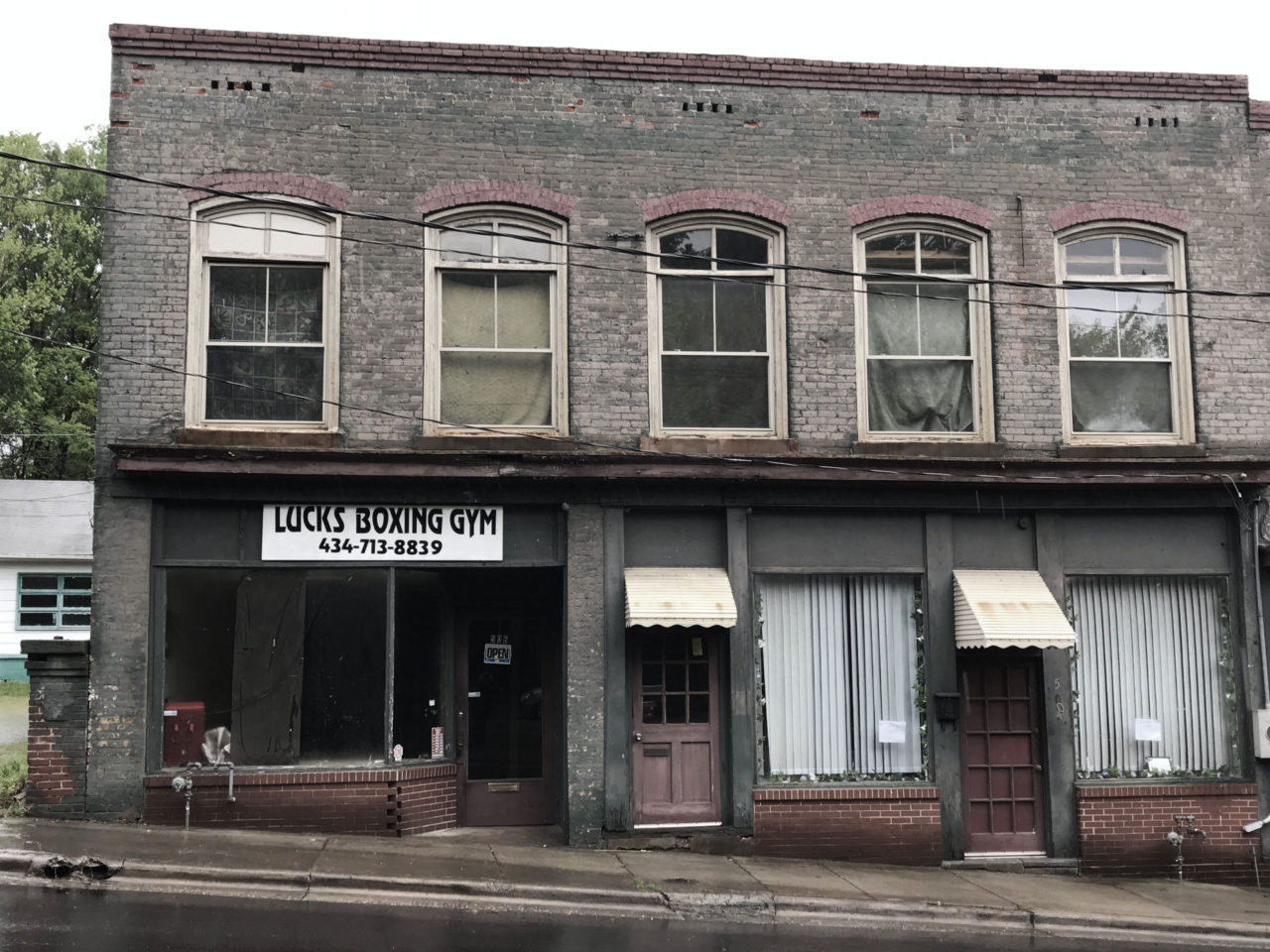
An “Open” sign hangs on the door of a long abandoned storefront just north of the Dan River. (Chadwick Moore/Breitbart News)
These days, nearly everyone in town has a story to tell about the untimely death of a loved one. Two years ago, Dwayne Martin’s best friend committed suicide. At an early age, Martin, a 32-year-old Danville native and restaurant cook, saw himself getting into trouble. There were drugs around, and his classmates were committing robberies around town. There were no jobs, and Martin left town to attend culinary school.
“Dan River Mills used to sponsor a lot of stuff for the youth to do,” Martin recalls over beers at a local restaurant. The youngest of 11, he says he returned to Danville realizing his nieces and nephews might fall into the same traps he nearly did, and wanted to be a strong role model for them. It was just before coming back he learned of his friend’s suicide.
“He was big into a lot of different activities that got cut out because of funding. He was stressed out about having nothing to do, there’s no jobs around, and he was depressed,” Martin says.
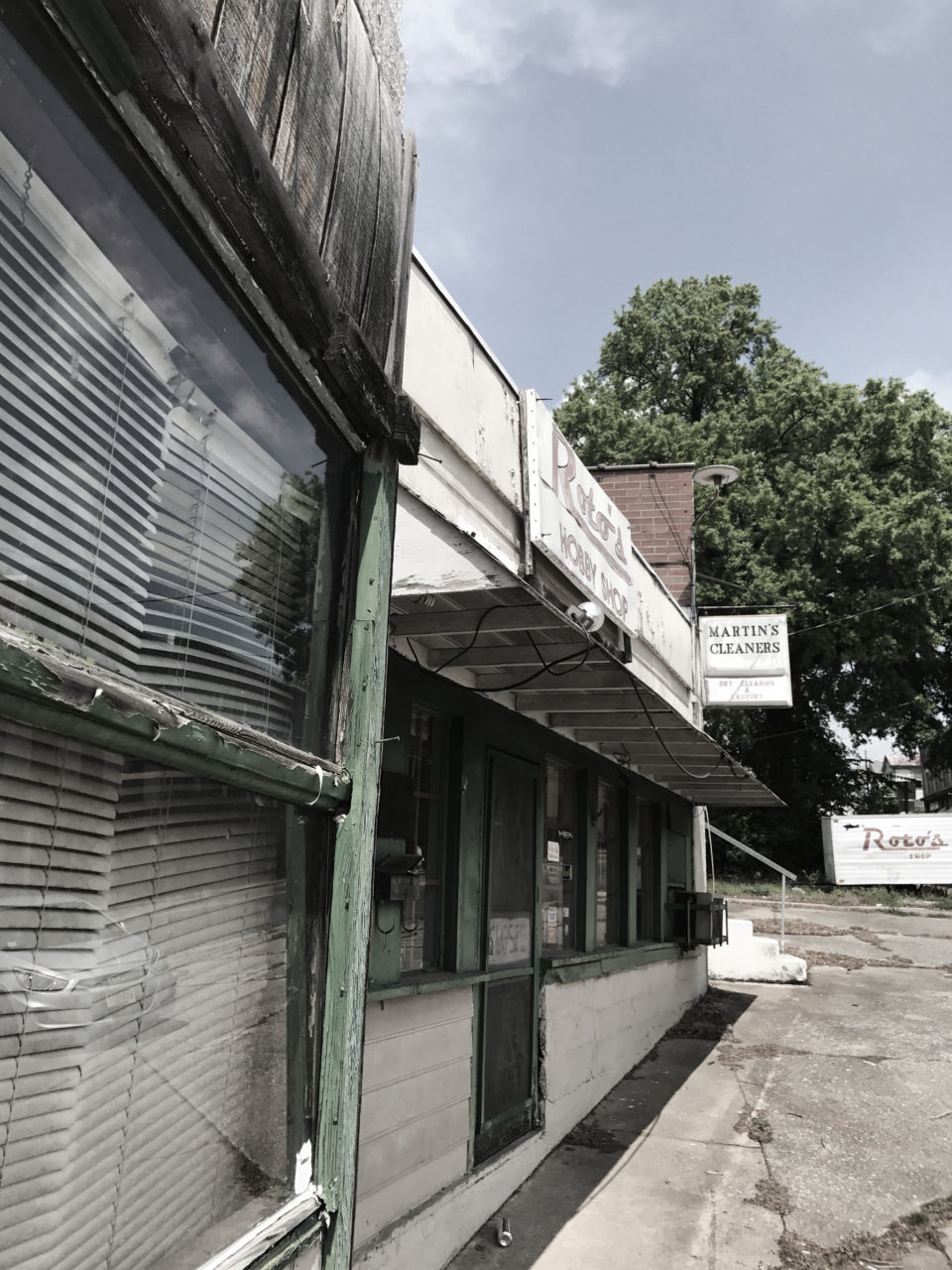
A row of empty storefronts on Danville’s north side, across the river from the White Mill. (Chadwick Moore/Breitbart News)
Danvillians are also dying faster in other ways. A report this year from the Robert Wood Johnson Foundation found Danville ranked 127 out of 133 localities in the state for the overall health of its citizens. The report identified unemployment and childhood poverty as the cause of higher than average rates of adult smoking, obesity, infant mortality, physical inactivity, teenage pregnancy, and sexually transmitted diseases.
“That’s the story of wage stagnation and off-shoring and this gradual dissolution of the borders,” Stumo told me. “That’s causing this drug addiction, this breakdown of the family, and the like. You have to have rational nationalism. You have to take care of the people in your own border.”
Cautious optimism spread through town a couple years ago. Rumor had it a national security contractor was moving into the White Mill facility, bringing hundreds of jobs with it. That never happened. The city then toyed with turning it into a shopping mall. That also failed. Last year, the city of Danville bought the property for $1.5 million, with no plans for what to do with the space.
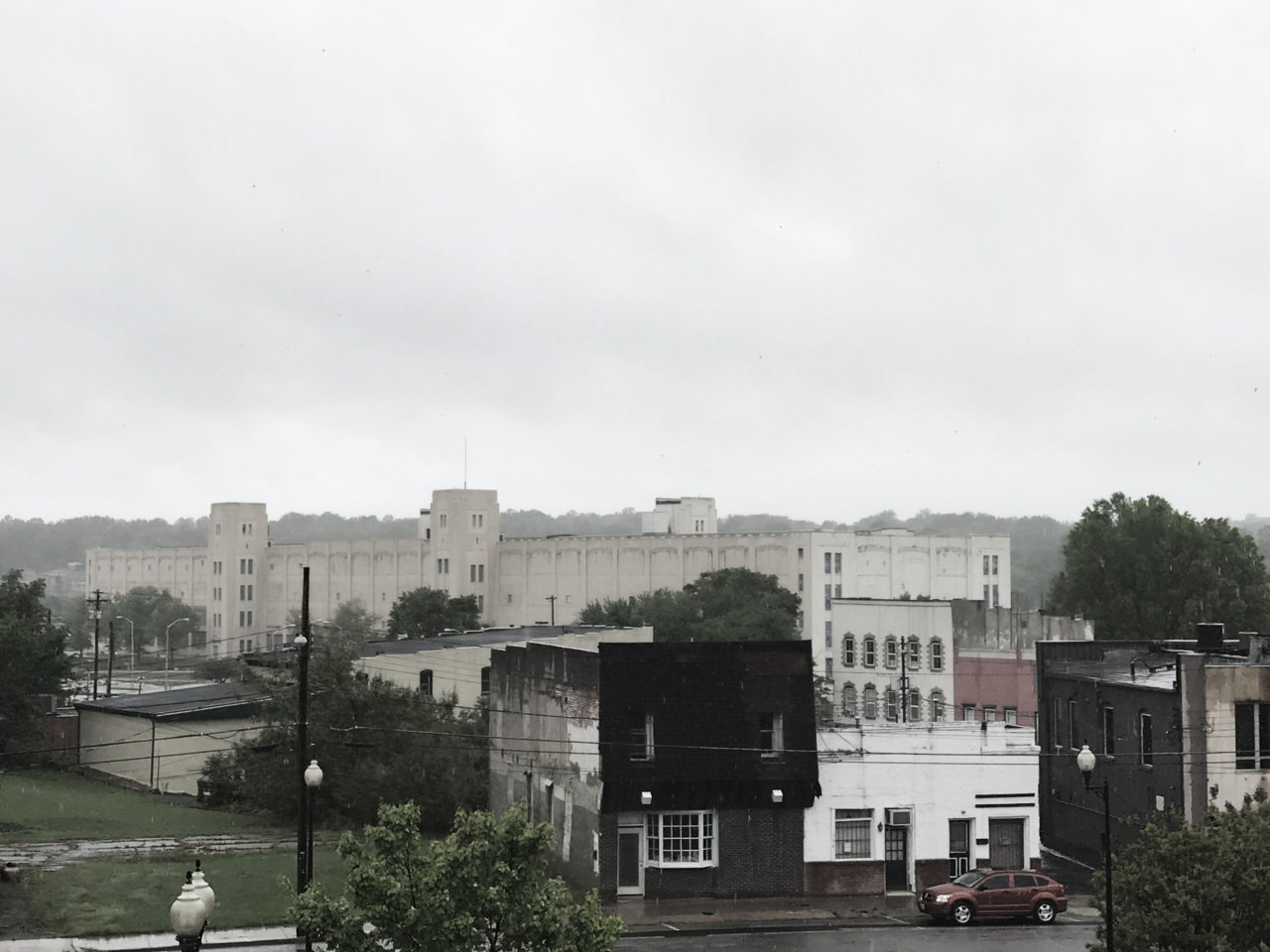
The city of Danville recently paid millions to purchase the empty White Mill facility. But plans to turn it into a shopping mall were abandoned. Hope floated as a national security firm considered moving into the space, before also pulling out. (Chadwick Moore/Breitbart News)
The city also committed $14.5 million to revitalizing downtown, which as recently as five years ago was a blighted ghost town. Today, downtown has been significantly cleaned up, even if a fresh coat of paint and repaired broken windows only accentuate the fact that, like a Hollywood soundstage, many of the structures are empty props.
On a rainy April late afternoon, I left my budget hotel on Riverside Drive to get something to eat. There is a group of men in dusty workwear who sit outside the entrance each day drinking beer from a cooler and amassing a small pyramid of cigarette butts in the ashtray near the door. At night, women wander the halls. Coquettish shrieks reverberate from the rooms at all hours.
I stopped by Hamm’s, a popular restaurant and bar. The sky had been pregnant and moody all afternoon, the occasional god-light bursting through clouds of rolling blue-grey. From the highway, long dead smokestacks perch ominously on the horizon like the once revered stone deities of a bygone civilization. In the foreground, along Riverside Drive, steam trails from the tops of lesser buildings, fast food restaurants, lined up like minutemen, where the only semblance of an assembly line left in Danville seemed to be the procession of cars inching along the drive-thrus.
In the car over, National Public Radio is running a segment on Janesville, Wisconsin, House Speak Paul Ryan’s hometown. His family has been there for five generations.
Janesville had been making Chevrolets for 85 years. In 2008, Ryan, then a congressman, received a phone call from the chairman and CEO of General Motors informing him that the company would cease all production of Chevrolets at its 4.8 million square foot facility.
What followed there was the same collapse seen in Danville; when GM left, the economy in this Wisconsin community of 60,000 toppled like dominos. Nearby suppliers shut down. Wages collapsed. Marriage rates fell, drug addiction increased, and political partisanship exploded in a once concordant Midwestern, Democrat-leaning town. Wisconsin went for Trump in the 2016 election, the first time the state voted for a Republican in 30 years.
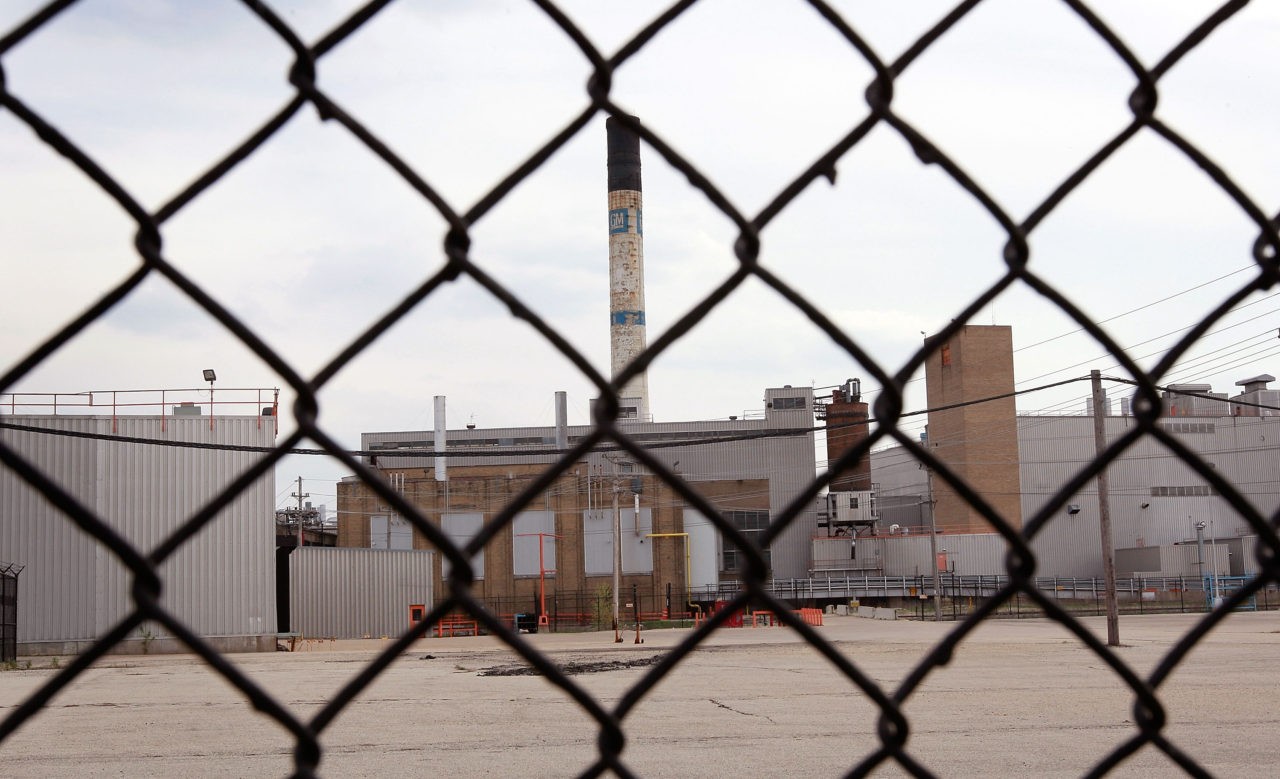
A fence surrounds the shuttered GM assembly plant on May 4, 2009, in Janesville, Wisconsin. Production of GM products at the plant ended in December 2008, eliminating all but a few of the 1,200 remaining jobs which once numbered over 5,000. (Scott Olson/Getty Images)
On the NPR show, a caller rings in from Portsmouth, Ohio, to recount a similar story from her community. Heroin is everywhere now, she says.
Curiously absent from the NPR segment and from a book about Janesville released last year, is any mention of globalization, NAFTA, and outsourced jobs overseas. The show’s host and journalists hold the hand of suffering working class Midwesterners, exploiting the fallout with no reference to the cause.
I am from a GM town–Columbia, Tennessee, a small, hilly, lush city about 45-minutes south of Nashville in the heart of Jack Daniels country. It’s known as Muletown, U.S.A. for the annual Mule Day celebration in April. A sign at the entrance to town proclaims Columbia is “Where the Old South Meets the New South.” Grand plantations sweep the landscape amid trailer parks and derelict little homesteads. GM keeps the middle class just above water here, even as the wealthy suburbs of Nashville encroach and bring with them generic strip malls and a more cosmopolitan set of people. Celebrities, including musician Sheryl Crow, have begun buying land in the area.
In September 2017, GM announced it would be cutting 680 jobs at the Spring Hill facility next to Columbia. Built in the 1980s to manufacture GM’s now-discontinued Saturn line, the plant has been plagued by incremental layoffs for years, coinciding with soaring crime rates and drug addiction.
Days after GM’s announcement, subcontractor Ryder Supply Chain Solutions announced it will cut an additional 361 jobs at the Spring Hill facility, a stark reversal from two years ago when the company said it planned to create 600 new jobs in the area.
It is karaoke night at Hamm’s in Danville and the crowd is in good spirits. I sparked conversation with David Thaxton, a high school math teacher.
“I have students who can’t learn because they haven’t had a meal in 24 hours, so I bring food to school to feed my kids so they can learn,” Thaxton, a tall, lanky man in his 30s, tells me.
“Many people in this town are now unemployable,” he says. “There are a lot of people who can’t pass a drug test. That has to do with ten years of economic depression.”
The next morning at House of Hope, a homeless shelter in downtown Danville, a 56-year-old father of five named James tells me he has occupied a bed here for two weeks. He is a former Dan River employee unable to find steady employment in the last few years.
“There was a lot of jobs back then,” he says, sitting in a sunny window of the 16 bed facility that opened in 2008. In the next room, a handful of men are sunk into the sofas in a common area watching television. “There were a lot of factories that were open. I can’t even name half of them.You had so many factories that were open and people mostly had jobs.”
James recently kicked cocaine and alcohol addiction and paid off hefty fines to reinstate his driver’s license.
“Danville always to me been somewhere that was laid back, if you wanted to retire it was good for that. It had a good atmosphere and not too much crime going on. Now the majority of the people I know have left to seek employment. Now it seems the city can only employ about a third of the people who are here. Most the people here are senior citizens, on disability, and not working,” he says.
This year, citing demand, the city of Danville announced plans to open a second homeless shelter. The city’s population, at 41,000, has been in freefall since NAFTA, with 10,000 fewer residents today than in the mid-90s, and many of those who’ve remained were only able to do so because of retirement packages from Dan River Mills.
Tim Kaine, current Virginia senator, former governor, and Hillary Clinton’s 2016 running mate, is a staunch proponent of free trade agreements and was an early fan of NAFTA and later President Obama’s 2015 renewal of the Trade Promotion Authority (or “fast track”), expanding executive power over trade negotiations.
As recently as July 2016, the month of the Democratic Convention, Kaine called the Trans Pacific Partnership, an Obama free trade proposal with Asia reviled by both Bernie Sanders and Donald Trump supporters, “an improvement of the status quo.” Only after Sanders’s supporters pressured the party to alter its platform later that month to go against TPP, Kaine said he no longer supported the policy in its current form.
As a state elected official, Kaine has made multiple face-saving trips to Danville, most recently last April. In 2014, Kaine began his keynote address to the Danville Economic Development Summit by telling attendees, “When you talk about issues of globalism and global trade, it’s natural in Danville to think about what we lose in globalism, what jobs might have gone, what manufacturing opportunities might have left. And there is a reality to that that we have to grapple with. And we’re talking about new free trade agreements right now, and we have to talk about what happened when NAFTA was passed since, and analyze what was good and what was bad.”
“This is an area that’s had economic challenges due to the transition from one industry to another industry,” Kaine, who is up for reelection to the senate this year, said, perhaps suggesting that Danville’s welfare system is a type of “industry” on par with manufacturing.
“The global economy, like it or not, that’s where we are. And you’re going to be more likely to succeed if you’re out there aggressively battling,” he said to a chilly audience through his folksy, Joker-grin.
The 2016 election ignited the long-simmering discontent of Americans on the received-end of lectures from politicians like Kaine. As they saw it, the last twenty years was a cycle of betrayal, abandonment, and deceit. First, America’s governing and financial elites stole their livelihoods with destructive trade deals, then lectured them about how great free trade has really been for them, then they ignored communities like Danville as they sunk deeper into decline. Finally—when these “deplorable” Americans chose candidate Donald Trump over the advice of their betters on the political right and the left—they were told, in the words of National Review’s Kevin Williamson, that their broken communities “deserve to die.”
Six months after assuming office, President Trump, speaking from the Rose Garden on his decision to withdraw the U.S. from the Paris Climate Agreement, told reporters, “I was elected to represent Pittsburgh, not Paris.” Seven months after that, Trump turned his attention sharply to the steel industry. While speaking to members of Congress in February, he calling out Chinese steel dumping into the U.S. market, saying “You see what’s happened with our steel and aluminum industries. They are being decimated by dumping from many countries—in particular one, but many countries.”
Cheap Chinese steel is produced below cost by state-owned entities propped up with heavy government subsidies. China’s economic industrialization began with reforms by Deng Xiaoping in 1978. By 1999, China produced around 123 million metric tons of steel a year. By 2011, just ten years after joining the World Trade Organization in 2001, China produced 45 percent of the world’s steel, at 683 million metric tons a year.
In the U.S., steel production peaked in the 1970s at roughly 140 million metric tons, but by 2014 domestic steel production had plummeted by nearly 40 percent, to 88 million metric tons. Behind China and Japan, the U.S. is now the third largest producer of raw steel in the world.
Twenty days after his meeting with congressmen, President Trump signed increased tariffs on Chinese steel and aluminum into law.
The move was met with mostly derision from the media. “Trump Misleads The Public On Steel Tariffs,” read the headline at Forbes. “Trump steel tariffs may leave these U.S. steelworkers jobless,” wrote Reuters. “The Real Danger of Trump’s Steel and Aluminum Tariffs,” blasted the New Yorker. “U.S. allies see Trump’s steel tariffs as an insult,” wrote the Washington Post.
At the signing ceremony in the Oval Office, Trump was surrounded by steel and aluminum workers who then asked the president to autograph their hardhats. Almost immediately after news spread, citing the tariffs, Pittsburgh-based U.S. Steel announced it would re-open an idle plant in Granite City, Illinois, and hire 500 new workers.
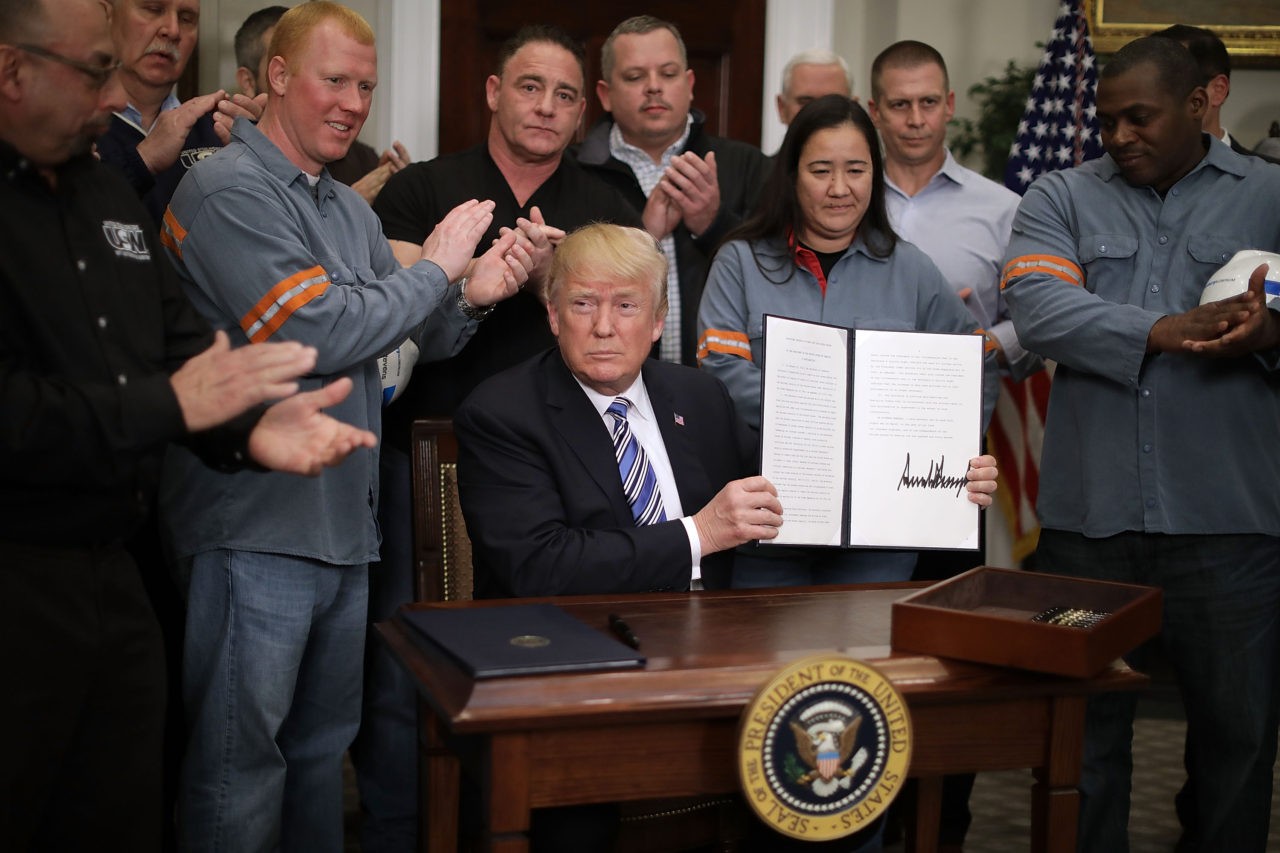
Surrounded by applauding steel and aluminum workers, President Trump holds up the “Section 232 Proclamations” on steel imports that he signed in Roosevelt Room of the White House on March 8, 2018. (Chip Somodevilla/Getty Images)
Chadwick Moore is a journalist and conservative political commentator who lives in Brooklyn, NY. Follow him on Twitter @Chadwick_Moore.







Comments are closed.